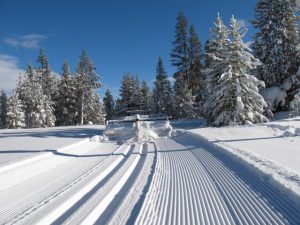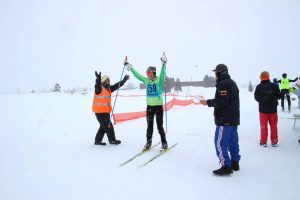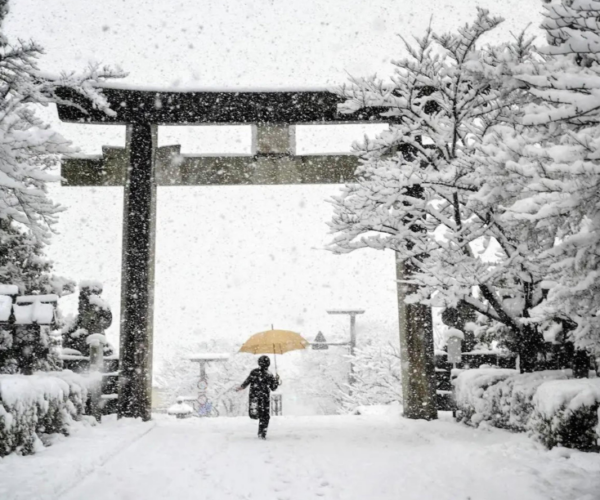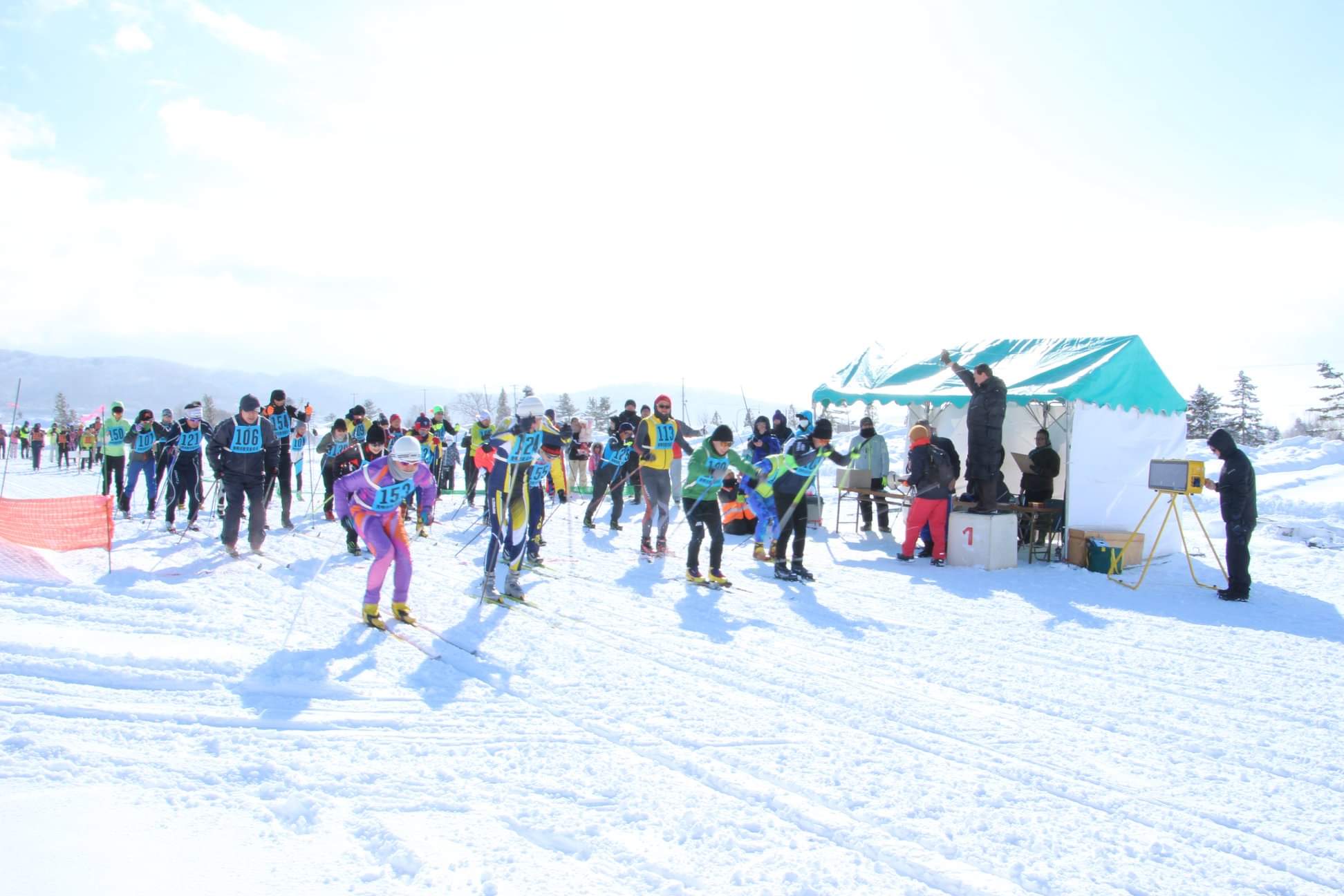My Journey With Cross-Country Skiing And How You Can Start Too
Sheila Mulherin (Hokkaidō)
This article originally featured in the March 2021 issue of Connect.
Cross-country skiing is a wonderful thing. You experience the beautiful natural scenery in the winter, with sweeping views of snow-covered mountains, and if you’re lucky, wildlife. All the while gliding along the top of the snow, your skis rhythmically crunching down as you breathe in the clean crisp air. Moving fluidly in the outdoors and taking in the scenery isn’t only a full-body workout, it’s therapeutic. Cross-country ski courses allow you to view the world in another way. They can take you around a small flat 1-kilometer oval track, parks, golf courses, woods, along rivers or over mountains.
My Journey
Being a huge running fanatic, I had quickly discovered the website Runnet after arriving in Japan, an invaluable resource for road and trail running races across Japan which also allows for easy race registration. I wondered how to fill the running void when my first winter in Hokkaidō came around. Starting around late November or December, I found ski races were listed on Runnet.
I had dabbled a bit in cross-country skiing in my childhood, which mostly entailed short ambles through the woods or around my parents’ yard. Upon seeing the opportunity to register for ski races on Runnet, I thought, “Wow, I can ski on flat ground for long distances? I need to check this out!”
Starting Out
I connected with a Nordic ski club in Sapporo, a group which provides invaluable information about starting out with cross-country skiing, such as tips about gear, cross-country ski courses, and recommended races. I enrolled in a few skate-style cross-country ski lessons for about ¥3,000 each, held by a club member in (simple) English. I got skate-style cross-country skis at the Hard-off in Makomanai, Sapporo, and ski boots at Nissen in Sapporo.
I skied on the weekends and some weeknights at the Tomisawa ski course in Asahikawa, a challenging course, groomed, with plenty of high-quality snow. There is a flat 1-kilometer loop for beginners, with a small hill nearby to practice inclines and descents, while the rest of the course is intermediate/advanced and requires skills to navigate the inclines and descents smoothly and safely. Alpine skiing experience helps with confidence on the descents.

My First Races
My first ski race was on February 23rd in Bibai, on a golf course, organized a lot like running races. You register ahead of time, get a bib on race day, and there is a groomed wide course prepared for you with arrows and volunteers pointing the way. We started in our own lanes, with parallel tracks to push forward for the first 50 meters of the race so we`re not stepping on each other`s skis. I didn’t rush and focused on using the correct technique as much as possible. The wind blew, helping me along on one side, and pushing against me relentlessly on the other.
Despite it snowing heavily, the course was still easily skiable thanks to a man on a snowmobile grooming the course ahead of the racers. The staff did their best to make me feel welcome, they all knew my name and cheered me on as I glided through the finish line. Though I was the last finisher, I was the first and only participant in my age group. I received a 1st place award, a spicy flavorful miso paste. I skied the 10-kilometer race in Takasu the following weekend and was once again the only one in my age group. Takasu offered great awards to the 1st place finishers: a bag of rice and a 24-pack of bottled tea.
Completing those races had boosted my confidence to try a longer distance, the 30-kilometer ski marathon in Rankoshi. The course boasts stunning scenery, winding through the Chisenupuri ski area. Since it was mid-April, snow was still on the ground but the temperature was warm, thus the course was a slush-fest, making it difficult to glide. Cross-country ski fanatics turned out nonetheless. After all, the race loot included a drawstring canvas bag.
Vasaloppet
The Vasaloppet ski race in Asahikawa was the big race of the season. The original Vassaloppet cross-country ski race is in Sweden, and races under the same name are held around the world. The most talented cross-country skiers in Japan turn out for this event. Ski rental is possible: you sign up and pay for it if needed when registering for the race.
My first time skiing this race was in 2018, the first weekend in March, and I skied the entire 15-kilometer distance. I was already familiar with the course and its challenging climbs and descents. My students had signed for the classic style race, the day after mine. The following year, 2019, I participated in the 30-kilometer race, two laps around a 15-kilometer course. Men participate in the 45-kilometer race, while women are limited to the 30-kilometer.
The excuse for this (in my opinion, sexism) was the strict time cutoff. Eniwa has the same situation, claiming that no women have been interested in the longest distance, so they stopped offering it to them. Some trail running races in Japan have very strict time cutoffs, but they let women participate, even if they are pulled out later on the course due to time cutoffs. The Yūbetsu 80-kilometer ski race allowed me to ski, and I wrote about it here.
At the start of the 2019 Vasaloppet 30-kilometer race, a group of older women were waiting and ready to go. They remarked that I seemed fast. I joked “Oh, no, I’m the number one slowest!” and they bantered with me, laughing, “No, no, I’m the number one slowest!”
We started on our own ski tracks, pushing straight ahead 50 meters before stepping out of our tracks to ski freely. The course curves, climbs and descends steeply. Thin long light cross-country skis prove harder to control on steep descents than alpine skis and require practice and confidence. This race is not for the fainthearted.
A man dressed in all green spandex zoomed by, lapping me twice during this race. As I neared a steep descent, an elderly man lost control and collided with me. We both were fine, thankfully. At the bottom of the same hill, a different (not elderly) man was sitting on the edge of the course and waiting for the Emergency Medical Technicians on snowmobiles. He had lost control at the sharp curve at the bottom.
Aid stations staffed by outgoing chatty volunteers along the way provided water, hot tea, sports drinks, small snacks, and chocolates. I appreciated them every time. I always bring a waist pack with hot tea and a little snack, just in case. Feeling good, I glided through the start/finish area to start my second lap, with new obstacles: children!
The shorter races had started around the same time I was passing through for my second lap. Children of all abilities zoomed around me; their speed and energy inspired me. Some were falling as well, and stepping on my skis, which proved a test of my agility.
After about 4-5 kilometers, the children had taken their respective turn offs to the finish line. The crowd thinned out and silence fell around me. I glided along easily, taking in deep breaths of fresh air and admiring the scenery. I took on the steep descents more confidently, with no one around to collide with. The clear weather held and I finished to a small group of enthusiastic spectators and volunteers cheering.

Lo and behold, I was correct when bantering with the other women at the starting line. I was the “number one slowest” 30-kilometer finisher. A few 45-kilometer finishers came in after me. That’s fine, I was out there for the experience and had enjoyed every minute. After the race, I popped off my skis and helped myself to post-race vegan-friendly food and drinks provided by the race organizers: a few onigiri, fruit, hot tea and a hot Swedish blueberry drink called Blåbärssoppa. I chatted with members of the Sapporo ski club, and a few Swedish skiers who’d come from Tōkyō two years in a row. We parted ways with a “See you next year!”
Sadly, we know how 2020 turned out, and how 2021 will turn out: Vasaloppet cancelled, two years in a row. On the positive side, most cross-country ski courses are being groomed this 2020-2021 season, with much higher quality snow this year than last!
For me, no finisher’s towel or bling is necessary. I will continue to cross-country ski for enjoyment. Let’s look forward to competing in more races in the winter of 2021- ………2022!
Groomed skate-style cross-country ski courses in Hokkaidō include (but are not limited to):
Takino Suzuran Park, Sapporo
Shirahatayama Stadium, Sapporo
Moerenuma Park, Sapporo
Makomanai Country Club, Sapporo
Otaki Sports Park, Date-shi
Tomisawa Elementary School, Asahikawa
Asahidake Visitors Center, Asahikawa
Shirogane Onsen, Biei
Sun Pillar Park, Nayoro.
Chiseneshi Cross-country Ski
Field, Otoineppu
Asahi Ski grounds, Shibetsu-shi (closed 2020-2021 season)
Kunneppu Recreational Park
Moiwa Sports World, Kitami
Okhotsk Park, Abashiri
Kashiwagaoka Park, Bihoro
How To Get Started:
First, check if there is a cross-country ski course in your locale or vacation destination. If your locale gets snow in the winter, there’s a high probability that a cross-country ski course is not far.
There are two styles of cross-country skiing: classic-style, and skate-style. Whichever style you choose will dictate what kind of ski boots and skis you buy, and what kind of course you ski on. A few ski lessons are recommended for either ski style. The technique doesn’t come naturally!
Classic-style skiing refers to skis with grip wax. It is similar to moving in a Nordic track exercise machine, with your poles moving opposite your legs, similar to walking. Classic-style cross-country ski courses are more ubiquitous. Classic-style ski tracks are usually carved out on the side of groomed skate-style cross-country ski courses. There are no citizen level classical races in Japan only elite races, but they are very popular in Europe, eg the Vasaloppet.
Aruku-style is referred to as cross-country touring skis in English. These skis typically have fish scales on the base. Aruku ski races in Japan are definitely not classical races as you can do them on skate skis. The name just denotes that the races are not as serious and often won’t be awarded.”
Skate-style involves moving in a similar way to rollerblading or skating, with both poles pushing off at the same time. You move faster in skate-style skiing, and it’s good cross-training for runners who are going through a knee injury (happened to me) and need to move their body in a different way. In Japanese it’s called “Free-style” or “Kurokan.” Skate-style ski courses require grooming.
Every ski course in Hokkaidō is free to use. Except for Asahidake, which is ¥500 unless you’re staying at a nearby hotel. The hotel gives you a bib, or if you can pay for admission at the visitors center.
Many town halls in Hokkaidō will lend you classic style cross-country skis, boots and poles free of charge! If your town snows amply every winter, there will probably be a program for this. Inquire your local town hall staff about cross-country skiing. The sports and/or recreation department will point you in the right direction, and possibly also have a schedule of group lessons available, most likely all in Japanese.
If you want to buy your own gear, starting out may be a little expensive. Get boots, skis, poles, windproof breathable clothes, a hat, gloves or mittens and a visor or sports sunglasses. Checking out second-hand shops is the cheapest route. Other shops for everything cross-country ski-related (in Hokkaidō) are Nissen and Sapporo Skid in Sapporo. Nissen also hosts pop-up events in smaller cities in Hokkaidō.
A Note On Safety:
In cross-country skiing, both styles are generally quite safe.
Acute injuries are rare compared to alpine skiing due to the slower speed, and the unattached heel in the binding allows for less ankle injuries. Chronic injuries due to overuse do occur, as in any endurance sport. Be mindful, try to use correct technique and posture, and listen to your body. With skate-style skiing, always pushing off from the same foot may result in irritation or an injury on the outer tendon of the ankle. Regularly switching which side you push off from will prevent this.
Staying on a groomed course or staying where the elevation change isn’t so extreme and avalanches aren’t a threat are the two safest ways to cross-country ski.
Backcountry skiing is another style of skiing, in which skiers venture into the alpine mountains and chart their own course, rather than staying on groomed courses or in small parks with little elevation change. Also called off-piste, alpine touring, or out-of-area skiing, it provides a chance to get up-close and personal with the wild winter mountains. Backcountry skis and boots are heavier and sturdier to maneuver in the deep powder snow.
Backcountry skiing is risky though, because avalanches are a real threat in backcountry terrain. Avalanche Safety Training (AST) courses are available in Hakuba and Niseko. Other countries’ avalanche safety certification courses may have a different label, but they all teach generally the same information: snow, weather conditions, and geographical features which facilitate an avalanche, the equipment used in a companion rescue, and how to rescue a companion who’s been buried in an avalanche. This course provided a valuable skill for me, has clearly shown me the risks involved, and effectively (for now anyways) scared me away from backcountry skiing.
If you want to experience backcountry skiing, I recommend participating in the AST 1 training course. Going with a qualified guide and with other skiers who have participated in the AST 1 course is the safest way. Every year, at least a few people in Japan lose their lives in the winter mountains. Respect the mountains!
Considering the Coronavirus:
Outdoor sports are safe against the coronavirus due to limited exposure to other people. Changing areas and bathrooms at cross-country ski courses may be closed or partitioned with clear plastic vinyl. Showers may be closed, so nearby onsens are an option. Onsens make an effort to stay safer by checking your temperature, putting alcohol pump sprays at the entrance, and promoting social distancing by spacing out lockers and restricting capacity.
In Conclusion:
It’s never too late to try a new activity! No matter your athletic (or unathletic) ability, it’s possible to improve steadily and feel gratification from it. Make mistakes, fall down, laugh about it, and keep plugging away. You don’t need fancy gear. Lined wind pants, sweat-wicking or wool layers, a thin down jacket, and your usual hat and mittens are fine for starting out. Cross-country skiing is a rewarding activity, benefiting your physical and mental health. Enjoy what all four seasons have to offer! Appreciate the winter while it lasts. See you out there!
Sheila is an English teacher in Hokkaidō. Originally from Boston, USA, she can be seen hiking, reading, trying out new vegan recipes, playing with her adorable cats Bailey and Maisy, or running obscenely long distances on the roads and trails. She always looks forward to the Hokkaidō winters when she can cross-country ski.




